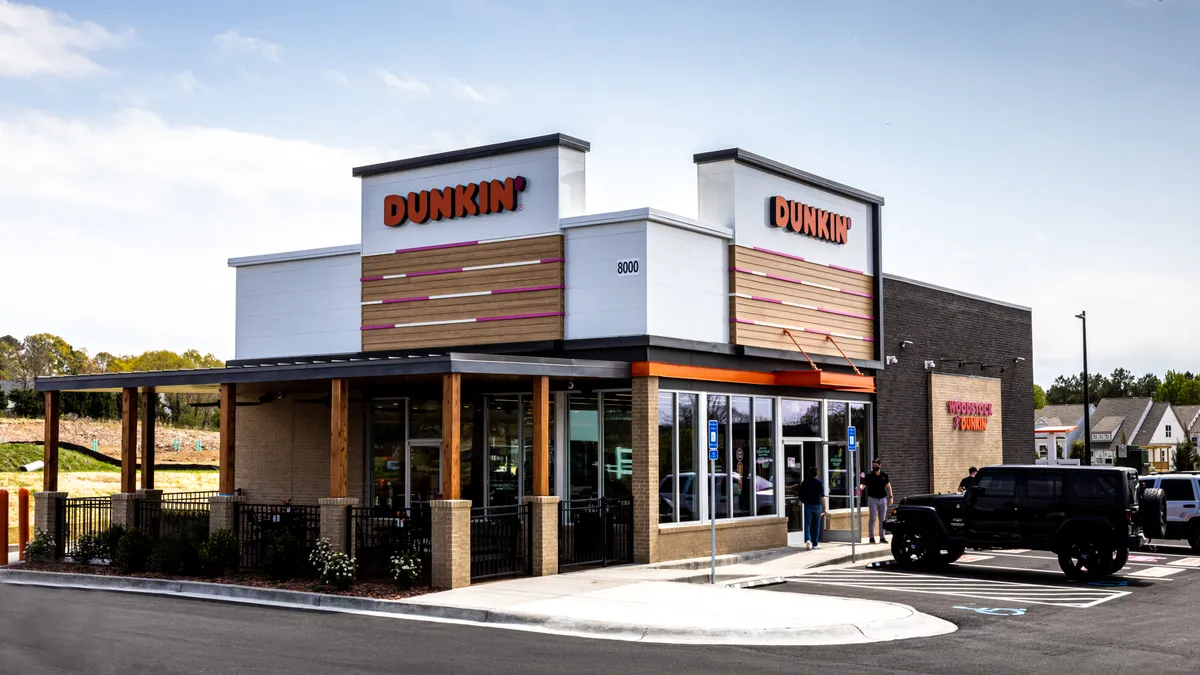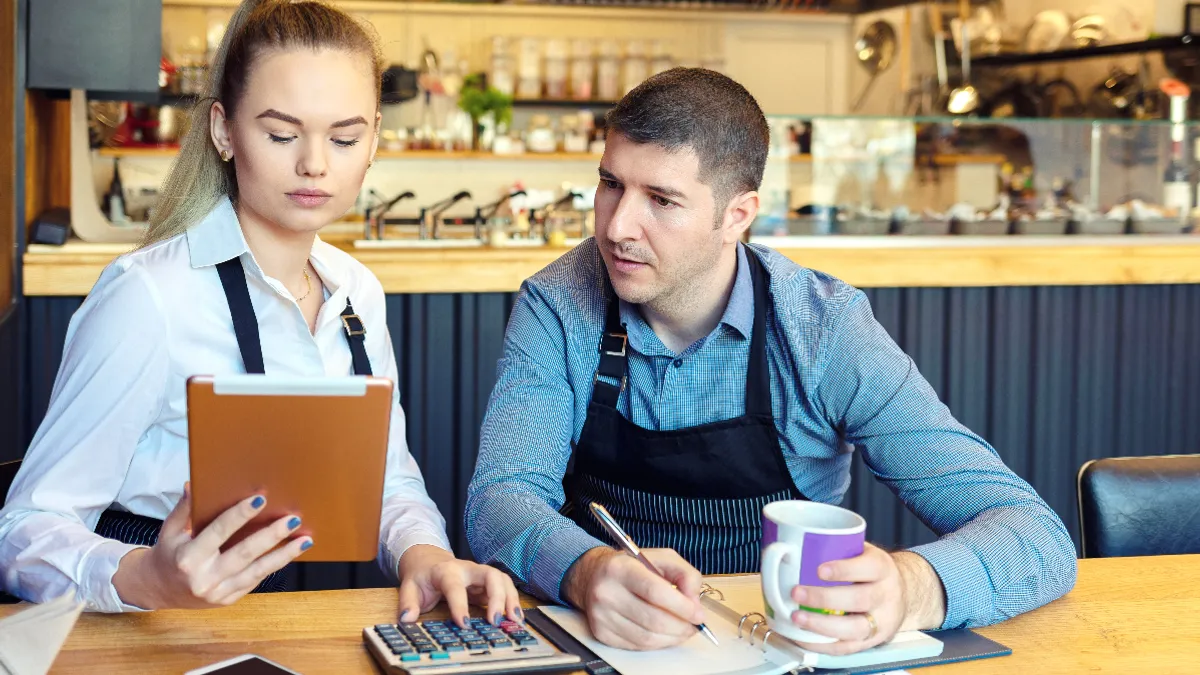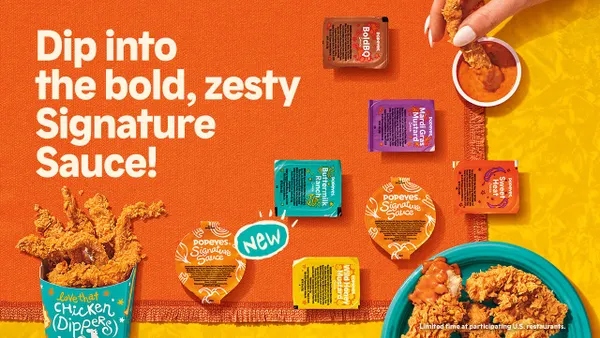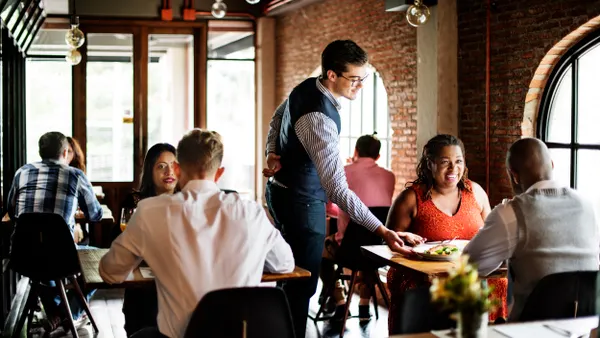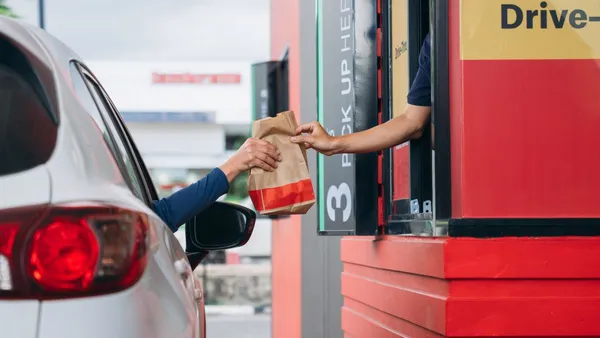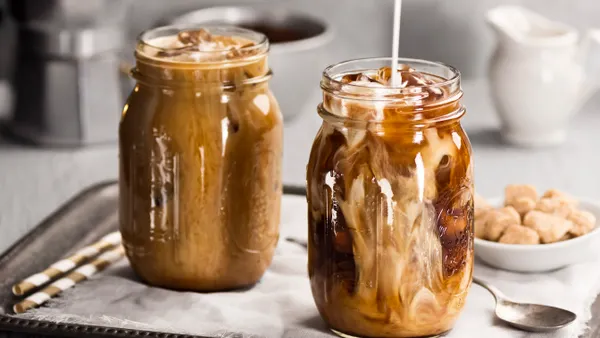Dive Brief:
- Wingstop's systemwide sales increased 21% for Q4 and 20% for the full year 2019. Comp sales were up nearly 9% on the quarter, according to a press release.
- During the quarter, digital sales represented 39% of the chain's sales. During the earnings call, CEO Charlie Morrison said that mix exceeded 40% in January.
- Morrison added that speed of service is a major focus in the U.S. because such a large percentage of orders is placed off-premise. He estimated Wingstop's total off-premise business is now around 80% of sales.
Dive Insight:
There are a number of takeaways from Wingstop's earnings call — international growth and wing prices among them. But it's the chain's continued focus on digital channels, including Winstop.com, the app and Wingbot, that have really driven results. This is especially a big deal as digital orders are typically $5 higher on average than non-digital orders, Morrison said on the call.
Such a focus has generated a significant cash flow for the company, which promotes further confidence and growth. Zack's pins Wingstop's year-over-year cash flow growth at nearly 22%, while the industry average is just under 8%. This could explain why Morrison is confident the company has the potential to grow to 3,000 units domestically, from around 1,000 now.
Very few restaurant companies have generated double-digit sales growth of late, and Wingstop joins just Chipotle and Popeyes during this quarter. Popeyes' chicken sandwich anomaly aside, Wingstop and Chipotle have something very critical in common — digital prowess. Wingstop is even taking a page from the Chipotle playbook in testing pickup lockers. Chipotle, which has quadrupled its digital business in three years, has been updating its restaurant design to include mobile pickup shelves.
Wingstop also announced it has added a dark kitchen in the United Kingdom market. If that model goes well, it could easily translate to the U.S., where delivery volumes are "generally pretty high," according to Morrison.
In fact, as more orders are placed off-site and volumes continue to grow, Wingstop could bring its entire international model stateside, which includes an "enhanced speed of service cooking platform.
"[Internationally] I'm very comfortable that we have identified the right … technology really through cooking procedures as well as the operational flows that … can deliver a transaction to our guests within five to eight minutes at any given point in time, which is really important as we work on this premium positioning of our brand," he said during the call. "[I]n the domestic market, our primary focus is to spend time looking at whether speed of service is necessary for our existing restaurants."
In doing so, Wingstop is testing seamless pickup options like kiosks and lockers. Morrison said the "real outcome" of the lockers centers around guest satisfaction due to the reduction of wait times.
"One thing we do know is our guests walk in, they have to wait in the queue and their order is sitting there ready, but they can't get to the cashier to get them processed or even if they’ve already paid for them, they still have to get to one of our cashiers to actually receive the order. So lockers alleviate that congestion, and we have seen benefit of that," he said.
He also cautioned that the test of these lockers continues because the investment cost "can be significant."
Still, at a time when off-premise occasions now make up a majority of restaurant business, and as consumers increasingly expect those wait times to be alleviated, chains that lean heavily into these specific channels will have an advantage. Wingstop and Chipotle continue to demonstrate this with each passing quarter.



